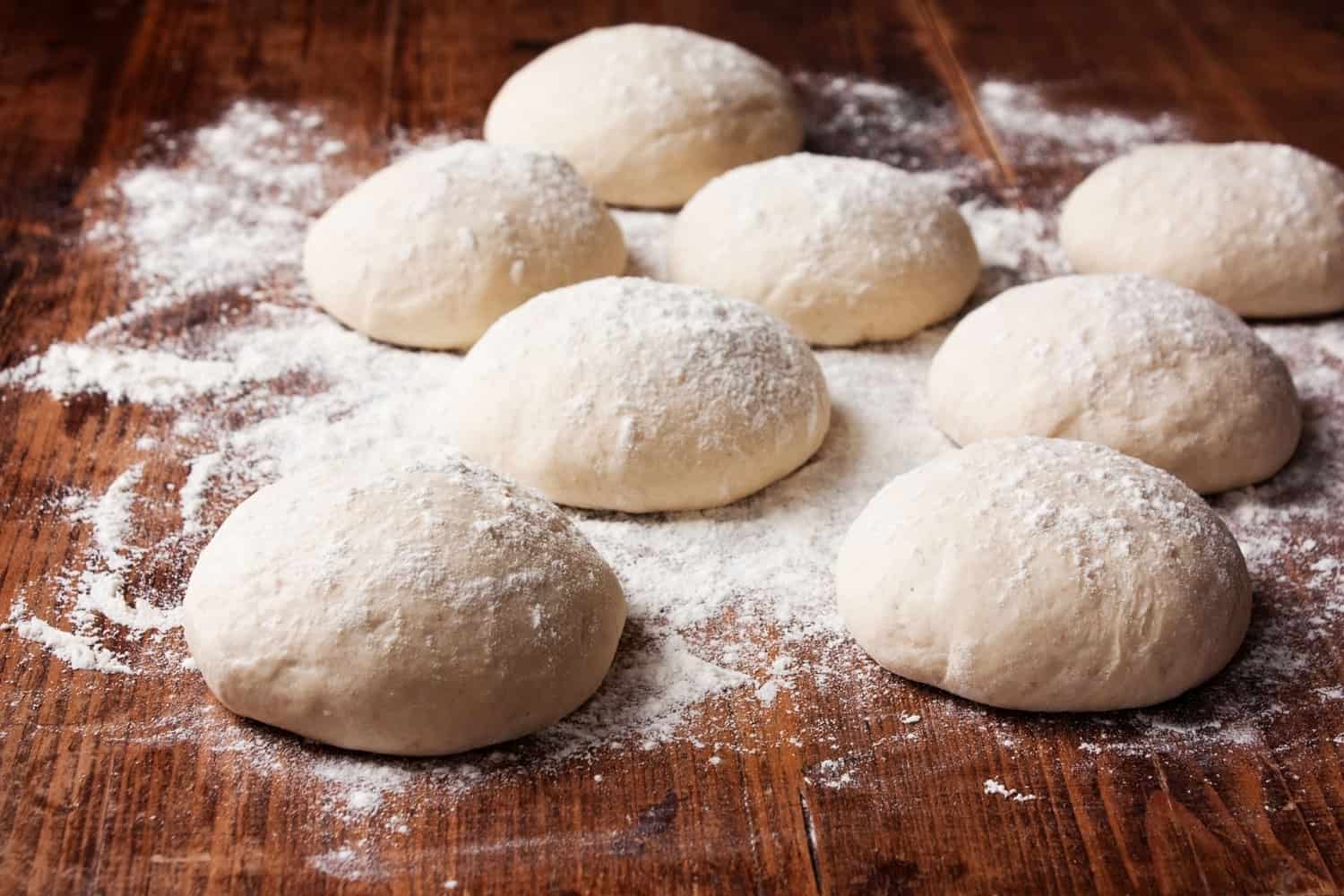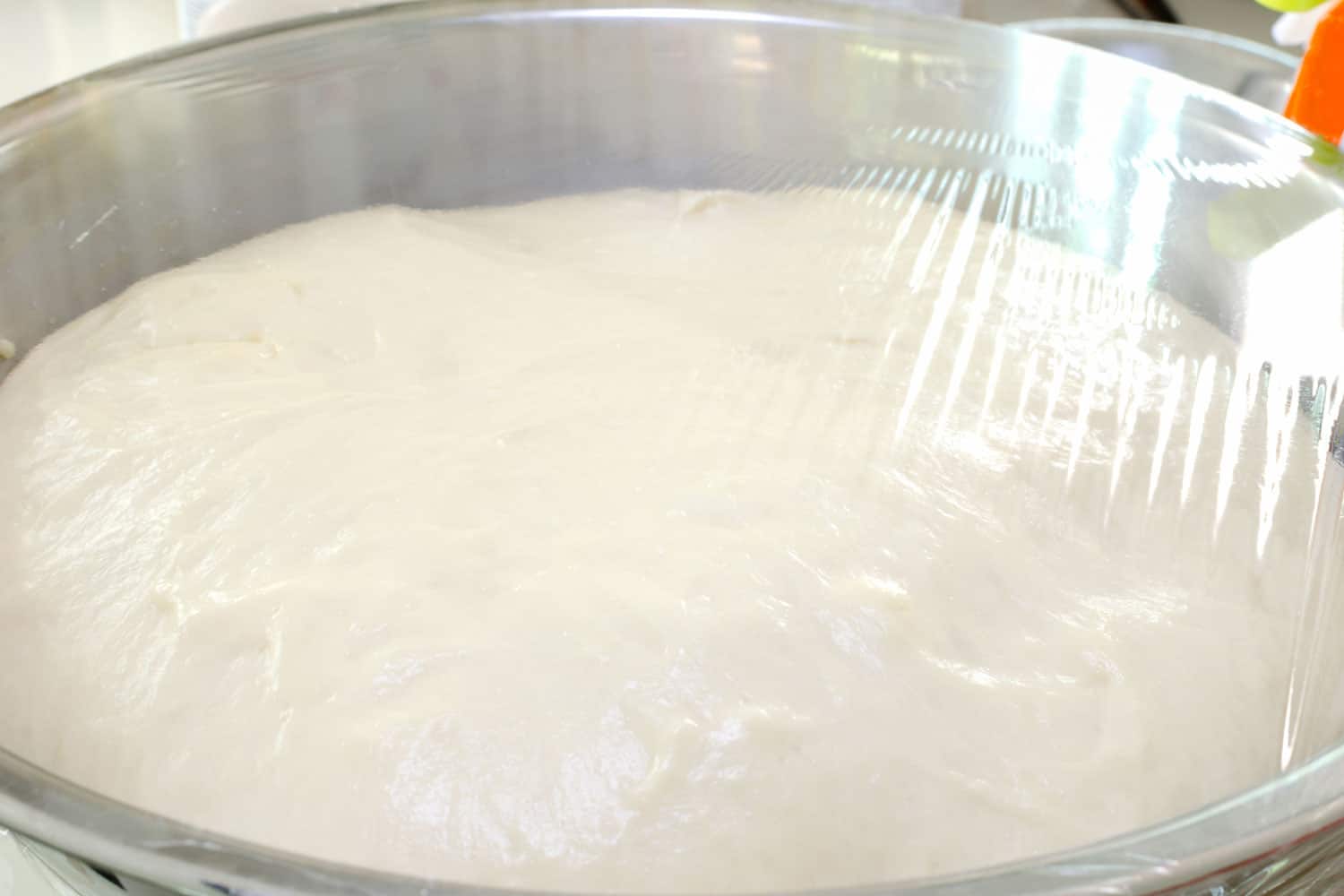After leaving your pizza dough in the fridge to sit, you're ready to take it out and make your own irresistibly mouthwatering homemade pizza! But can you use it when it's cold? We've done the research to find out whether pizza dough should be warm or cold - and we've got the answer right here.
Pizza dough should never be cold. Cold dough is difficult to stretch and shape, resulting in a dry crust. After taking your pizza dough out of the fridge, let it warm up to room temperature before using it.
Keep reading as we take a closer look into the reasons why warm pizza dough is ideal. We'll also give you more tips on storing it and using it after refrigeration and provide answers to other pizza dough-related queries, so stay tuned!

Why Pizza Dough Should Be Warm
Whether you've stored it in the fridge overnight or bought it frozen from the grocery store, cold pizza dough should always be warmed up before use. Why is this the case?
Pizza dough involves mixing flour and water together which results in the formation of gluten. This protein helps make the dough smooth and elastic, so it becomes easy to shape as a result.

Now when your pizza dough chills in the refrigerator, the gluten in it tightens up and makes the dough lose its elasticity. As such, cold dough is extremely difficult to stretch out when you take it out of the fridge and try to work with it right away.
You'll also find that shaping cold dough is quite challenging, as it will snap back instead of conforming to the shape and size you want.
This is why it's extremely important to let the dough warm up for around half an hour or until it reaches room temperature. Also, make sure it's in an environment that's not too cold or not too warm, so the dough achieves perfect elasticity.
How To Store Pizza Dough

Freshly-made pizza dough tastes like heaven, but that doesn't mean pizza dough stored in your fridge or freezer will taste any less delicious. In fact, it's perfectly acceptable to make loads of pizza dough and stash it away for later use when guests arrive or whenever your cravings demand it.
The key is to store it properly to maintain its freshness and quality! Here are the steps to refrigerate your pizza dough:
1. Let your pizza dough rise
After mixing your ingredients and kneading them into a smooth, firm dough, it's time to let the dough rise. You can either place it in an airtight container or put it in a bowl and cover it with plastic wrap. This will ensure that your crust turns out nice and fluffy.
2. Divide the pizza dough into portions
Once the dough rises, you'll want to mold it into individual balls for different uses. Each ball should correspond to the size you want to make in the future. This way, you can take out a ball of dough whenever you want to make a pizza - and it'll fit easier in your fridge as a bonus!
3. Coat the pizza dough with oil
Brush the dough with oil and see to it that it's coated evenly. After this, it'll be ready to go in the fridge.
4. Store the pizza dough in the fridge
The most common way to store pizza dough in the fridge is by putting it in a bowl and covering it with plastic wrap.
However, some people opt to store the dough in plastic wrap for convenience. Others keep it in an airtight container or plastic bag. Any of these choices will do.
You can also opt to freeze your pizza dough if you want it to last longer! Frozen dough can last for up to 3-4 months. Here are the steps to freeze pizza dough:
1. Let the pizza dough rise
Similar to refrigerating pizza dough, it's important to let the dough rise for around 30 minutes to 1 hour before freezing it.
2. Refrigerate the pizza dough
Pizza dough needs to rest in the fridge before it's put in the freezer. This is because freezing halts yeast fermentation, which prevents it from developing rich and complex flavors. Letting the pizza dough sit in the fridge overnight allows the yeast to fully ferment before the dough gets frozen.
3. Freeze the pizza dough
After sitting in the fridge overnight, you can take out the pizza dough and freeze it. If it's in a Tupperware container, you can simply put the container in the freezer. If it's in a baking pan, transfer the dough to a Ziploc bag or a sealed plastic bag before putting it in the freezer.
How To Use Pizza Dough From The Fridge

Ready to take your pizza dough out of the fridge and get baking? Make sure to follow the right steps to get that fluffy, delightfully chewy crust packed with flavor!
Here are the steps to prepare your pizza dough for baking:
1. Let the dough warm up
Remember how pizza dough should always be warm before you use it? Make sure to let your refrigerated dough warm up to room temperature before doing anything else.
Frozen pizza dough should thaw in the fridge overnight. If you used Ziploc bags to store it in the freezer, transfer it to a baking pan dusted with cornmeal or semolina flour before putting it in the fridge.
After it's completely thawed, let it rest for another hour at room temperature.
Looking for more tips on how to work with frozen pizza dough? Check out this helpful post: "How To Use Frozen Pizza Dough Balls."
2. Prep the surface
Place the dough on your worktop surface lined with flour. Your hands should also be dusted with flour at this point. Other bakers use olive oil instead of flour since flour can dry out your dough and yield a tough crust.
3. Stretch out your dough
Doing this requires skill and technique so that the dough turns out airy and light. Start by pressing your fingers into the dough to flatten it, then pull it in opposite directions as you rotate it.
Next, pick up the dough and pinch the edges with your hands. Rotate it, then stretch it by pulling it from hand to hand.
4. Transfer the dough to a pizza peel
Now it's ready to be stretched out and flattened into a circle on a pizza peel dusted with cornmeal or semolina flour. Check the dough for any tears or overly thick areas, then pinch it to cover holes and achieve an even surface.
Voila! All that's left to do is to top it up with your choice of sauce, toppings, and cheese, then bake it to golden perfection.
How warm should pizza dough be?
Your pizza dough should be at a temperature of at least 65°F before you start stretching it out. Any colder than that and it'll be difficult to work with.
To help you check whether your dough is at your target temperature, use a dough thermometer.
Check out this digital kitchen thermometer on Amazon.
How long should pizza dough sit out before using?

24 hours is the ideal amount of time to let pizza dough sit out. Make sure to let it rest in a cool environment such as in your fridge to allow proper yeast fermentation.
If you're going to use your pizza dough right away, it's best to let it sit out at room temperature for around 3-4 hours.
Can you let pizza dough rise for too long?
Yes. Letting pizza dough rise for over three days will result in over-proofed dough, which will eventually collapse. This is because yeast starts to eat up the sugar and produce more ethanol in the dough.
Over-proofed dough won't rise or hold its shape in the oven. The result is dense, deflated dough with poor flavor.
Learn more about proofing your pizza dough the right way by reading this article: "How To Proof Pizza Dough."
Should I bake my pizza dough before adding toppings?
Some bakers swear by baking the pizza dough for 5-6 minutes before putting in the toppings to get the perfect crisp in the crust. It also ensures that the cheese doesn't burn.
Other bakers say it's perfectly fine to bake your dough with the cheese, sauce, and toppings already in place. The trick here is to see to it that the dough is sufficiently wet and that the pizza doesn't get overloaded with toppings.
Ultimately, this will depend on the type of crust you want to achieve. It's best to pre-bake your pizza dough if you want an extra crispy crust for your pizza.
The Wrap-Up

There are a few hard and fast rules to making your pizza dough, such as ensuring it's warm before working with it.
The good news is that there are other techniques that aren't as rigid, and you can explore different ways to make your pizza dough until you get the perfect, better-than-takeout-quality crust!







![Chef spreading tomato sauce in the pizza dough, How Much Pizza Dough Per Pizza? [By Pizza Size]](https://kitchenseer.com/wp-content/uploads/2022/02/Chef-spreading-tomato-sauce-in-the-pizza-dough-250x250.jpg)